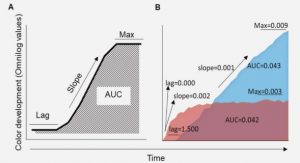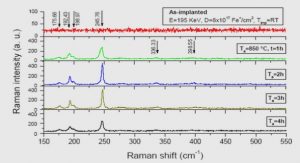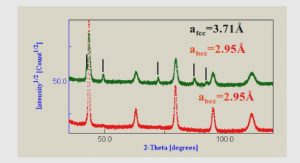Get Complete Project Material File(s) Now! »
GASTRIC DIGESTION AND EMPTYING
When they are swallowed, the food boli formed in the mouth reach the stomach via the oesophagus. The gastric phase of digestion has been less studied than the oral phase due to the limited accessibility. However, expanding knowledge on this digestive step is essential to assess the bioavailability of nutrients in the gastrointestinal tract. (Kong & Singh, 2008).
Four anatomic regions can be distinguished in the stomach: fundus, body, antrum and pylorus (Figure 21). The term proximal stomach is often used in reference to the fundus and body regions, and distal stomach is used in reference to the antrum and pylorus. (Kong & Singh, 2008).
Asterisk (*) denotes statistically significant different from basal saliva for a given parameter, p < 0.05.
The main function of the stomach is to store the food ingested during a meal and to regulate its release into the duodenum (M. E. Smith & Morton, 2011) but also to churn and mix the food with gastric secretions forming a multiphase slurry called chime (Kong & Singh, 2008; M. E. Smith & Morton, 2011). Additionally, the stomach has also range of other functions (M. E. Smith & Morton, 2011):
– exocrine: secretions of digestive juices, collectively known as gastric juice, into the stomach lumen.
– paracrine: mainly through the secretion of histamine that stimulates gastric acid secretion.
– endocrine: the major endocrine secretion is gastrin, an hormone which acts both locally on the stomach smooth muscle and mucosa to stimulate gastric motility and acid secretion, and distally on the intestines, pancreas and liver.
In the fasted state, resting gastric volume is close to 20 mL (Grimm, et al., 2018), and the pH is ≤ 2 (Dressman, et al., 1990; Gardner, Ciociola, & Robinson, 2002; Kalantzi, et al., 2006; Malagelada, Go, & Summerskill, 1979; Troost, Steijns, Saris, & Brummer, 2001). During consumption of a meal, the stomach expands to accommodate the boluses that enter the stomach and the gastric juice that is secreted. The volume expansion is adjusted as a function of the gastric contents (Kwiatek, et al., 2009) and it is this flexibility that confers the stomach its reservoir function (Kong & Singh, 2008). Depending on the properties of the meal, postprandial pH increases to the range of 4.5 to 7 (Dressman, et al., 1990; Gardner, Ciociola, & Robinson, 2002; Kalantzi, et al., 2006; Malagelada, Go, & Summerskill, 1979; Troost, Steijns, Saris, & Brummer, 2001).
STARCH DIGESTION RATE – INFLUENCING FACTORS
The rate of starch digestion can vary greatly between different foods (Goñi, Garcia-Alonso, & Saura-Calixto, 1997; D. Jenkins, et al., 1982). Given the relationship between the starch digestion kinetics and the glycaemia response, extensive work has been dedicated to the understanding of the factors that influence starch digestion rate and to the development of strategies to slow it down. The differences between the structural properties of foods can have a major influence because of the potential effects on the accessibility of digestive enzymes. Additionally, there are also factors that can have a direct impact on digestive enzymes (ex.: the presence of inhibitors or the pH).
THE STRUCTURAL PROPERTIES OF FOODS
The structural properties of foods can be examined in numerous ways and at different levels from the molecular scale (ex.: level of starch gelatinization) to the macroscopic scale (ex.: particle size or porosity of foods).
EXAMPLES AT A MOLECULAR TO MICROSCOPIC SCALE
Amorphous areas of the starch granules are generally degraded more easily by α-amylases than crystalline areas (Tomas & Atwell, 1999). Overall starch digestibility is favoured when (Tester, Karkalas, & Qi, 2004): (a) it is in an amorphous state (especially physically damaged or gelatinized); (b) freely accessible to digestive enzymes rather than entrapped in food particles; (c) not associated with other molecules forming associations or complexes (such as amyloselipid complexes); (d) not chemically modified in a form that prevents it from acting as a substrate for amylases.
DIETARY FACTORS THAT CAN DIRECTLY INF LUENCE ENZYMES INVOLVED IN STARCH DIGESTION
A simple dietary strategy to achieve a lower glycaemic response is to pair starch-rich foods, or meals, with food products that can somehow exert an inhibitory effect on amylases. Indeed, a similar type of approach been considered effective in contexts where glycemia management represents an even bigger challenge than in healthy populations. An example is the treatment of type 2 diabetes via the administration of acarbose, an inhibitor of amylolytic enzymes and brush-border glucosidases in the digestive tract (Salvatore & Giugliano, 1996). Some beverages or condiments that are commonly consumed could provide such an opportunity.
Some interesting results have indeed been found in vitro for coffee and tea. For coffee, some substances isolated from coffee beans have been reported to exert an inhibitory effect on pancreatic amylase (Funke & Melzig, 2005; Narita & Inouye, 2009). Teas also might be a suitable option as some of them can inhibit salivary (Y. Hara & Honda, 1990; Kashket & Paolino, 1988; Zhang & Kashket, 1998) and pancreatic (Kwon, Apostolidis, & Shetty, 2008; Quesille-Villalobos, Torrico, & Ranilla, 2013; Striegel, Kang, Pilkenton, Rychlik, & Apostolidis, 2015) α-amylases in vitro. The same has been observed for tea extracts and purified tea polyphenols (Fei, et al., 2014; Forester, Gu, & Lambert, 2012; K. Hara, et al., 2012; Miao, Jiang, Jiang, Zhang, & Li, 2015; Sun, Gidley, & Warren, 2018; Sun, Warren, Netzel, & Gidley, 2016; Yilmazer-Musa, Griffith, Michels, Schneider, & Frei, 2012).
However, results of in vivo studies with teas and coffees is unclear. Consumption of caffeinated coffee for example might in fact be linked with impaired blood glucose management (Moisey, Kacker, Bickerton, Robinson, & Graham, 2008). Moreover, investigations on the effect of tea seem to show different effects. In some studies, it has been reported that polyphenols and fibre present in fruits, together with a cup of green tea, have a pronounced lowering effect on postprandial glucose and insulin to bread (Nyambe-Silavwe & Williamson, 2016). In others, as it can be observed in Figure 29, consumption of green tea with a bread-based meal for breakfast, for example, appears to have no glucose lowering effect (Josic, Olsson, Wickeberg, Lindstedt, & Hlebowicz, 2010), and adding green-tea extracts to a starch based confection produced similar results (Sapper, et al., 2016).
Other studies have investigated the effect of condiments. Cinnamon, for example has been reported to attenuate the postprandial glycaemic response to instant cereal (Magistrelli & Chezem, 2012). Another example is cayenne chili, which appears to have no effect on the glycaemic response but can improve postprandial insulinaemia (Ahuja, Robertson, Geraghty, & Ball, 2006).
HUMAN STUDIES
The study of digestion in the human body is essential for an integrated comprehension of all the processes involved, the responses triggered and their consequences. This is, however, a complex task due, in one part, to the difficulty of access to the digestive system, and, in the other, to the miscellany of physical (ex.: rheological properties, liquid vs. solid phase, molecular interactions) and chemical (ex.: molecular and macromolecular composition, water content and minerals) properties of the meal which in turn determine the characteristics of the bolus and chime (Gaudichon, 2013). There are various methods available, each with its specific applications and limitations, advantages and disadvantages. Knowing them is important when selecting the tools for a human study, combining them is key for achieving a thorough and integrated understanding of the digestive system.
A summary of existing methods, as well as their applications, advantages and disadvantages or difficulties is presented in Table 3. It is possible to classify the available methods into two main categories, direct and indirect. Direct methods are those that enable the evaluation of the specific parameter(s) under study. In contrast, indirect methods are based on the analysis of a given tracer for the parameter under study (ex.: accessing gastric emptying through the rate of arrival of a given substance to the bloodstream) (Gaudichon, 2013; Kim, Myung, & Camilleri, 2000). Additionally they can be invasive (requiring intubation for example) or non-invasive (through medical imaging). Finally, it is important to highlight that in most cases these methods can also be adapted to animal studies even though some of them require anesthetizing the animals.
For the particular purpose of the study of gastric function in the postprandial state, different mechanisms may be investigated, including intragastric meal distribution and gastric accommodation, motility, and emptying. As shown in Table 3, there are at least 6 methods that can be employed for such purposes. Two of them (Paracetamol absorption test, and stable isotope breath test) can be specifically used in gastric emptying studies. They have the important advantages of avoiding exposure to radiation or being of relatively simple application, but they appear to have only been validated for one type of meal (solid or liquid) and the gastric emptying is assessed through an indirect measurement. The four other methods can provide direct measurements of parameters related with gastric function but some present significant limitations. It is the case of intubation techniques, which can provide very precise information about the digestibility of nutrients, but which are also invasive and might thus cause discomfort to the participants and alter the gastric function. The three remaining methods are non- invasive, and mostly based on direct measurements. These are Scintigraphy, Ultrasonography and Magnetic Resonance Imaging (MRI). Scintigraphy is considered as the golden standard for gastric function studies. The fact that this technique has a high temporal resolution and that it allows to monitor gastric emptying of the liquid and solid components of a meal, independently, are among its strongpoints. Interesting results were reported by the team of Siegel and colleagues, who studied the gastric emptying patterns of a meals composed water with either an egg sandwich or chicken liver (Siegel, et al., 1988). The liquid (water) and solid (egg or liver) components of the meals were labelled differently, and this enabled the researchers to study what they have defined as the biphasic nature of gastric emptying. They have observed that emptying of water started immediately and at a fast rate, while the solid phases had initial lag phases, ranging from approximately 30 min for the egg sandwich up to almost 1h with the liver meal. After 30 min of digestion, at least 90% of the solid phase was still in the stomach, while only about 50% of the liquid phase remained. Their results are presented in Figure 32.
Table of contents :
Introduction
I. State of the art
1. The properties of starch and staple starch-rich foods – an overview
2. Starch in Human nutrition – Digestion and physiological response
3. In vivo approaches to study digestion
4. Digestion studies using Magnetic Resonance Imaging (MRI)
5. In vitro approaches to study digestion
Objectives
II. In vitro studies
CHAPTER 1 – The impor tant role of sal ivary amylase in gas t r ic digest ion of wheat bread starch
1. Int roduct ion
2. Mater ial s and Methods
3. Resul t s and Di scuss ion
Conclus ion
Key -mes sages
CHAPTER 2 – Orogastrointest inal digest ion of starch in whi te bread.
1. Int roduct ion
2. Mater ial s and Methods
3. Resul t s
4. Di scus sion
Conclus ion
CHAPTER 3 – Acid induced reduct ion of the glycaemi c response to s tar ch – r ich foods: The sal ivary amylase inhibition hypothesi
1. Int roduct ion
2. Mater ial s and Methods
3. Resul t s
4. Di scus sion
CHAPTER 4 – Inhibi tory ef fec t of black tea, lemon juice, and other beverages on sal ivary and pancreat ic amylases: What impact on bread s tar ch digest ion? A dynamic in vi t ro study.
1. Int roduct ion
2. Mater ial s and Methods
3. Resul t s and Di scuss ion
Conclus ion
Supplementary data
Key mes sages
III. In vivo studies
Out l ine and preparat ion of the c l inical study
CHAPTER 1 – Lemon juice lowers the postprandial plasma glucose response to bread in healthy volunteers
1. Int roduct ion
2. Subject s and Methods
3. Resul t s
4. Di scus sion
Conclus ion
Key mes sages
CHAPTER 2 – Reduct ion of the glycaemi c response to bread in the presence of lemon juice: MRI investigationson gastric proces s ing and emptying
1. Int roduct ion
2. Subject s and Methods
3. Resul t s
4. Di scus sion
Conclus ion
Key mes sages
IV. General conclusions and Perspectives
General conc lusions
1. The cont r ibut ion of sal ivary amylase to s tar ch digest ion
2. Complementar i ty between enzymat i c as says, in vi t ro and in vivo studies
3. At tenuat ion of the glycaemi c response in the presence of lemon jui ceunder lying mechani sms Perspectives
1. Re-evaluat ion of the proces s of starch diges t ion
2. Improvement of in vi t ro protocol s
3. Complete the analysi s of the MRI data
4. Future MRI studies
References






